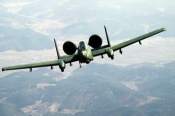-
The Nation (USA)
FEATURE STORY | Special Report |
>
12/2/2001
War Without End
by A.C. ThompsonIn early November, as American B-52s pummeled Taliban positions, a
team of United Nations scientists surveyed the wreckage of the
world's last major bombing campaign, the 1999 siege of Kosovo. Since
the seventy-eight-day NATO bombardment, researchers with the UN
Environment Program have scoured the fractured Balkan landscape,
checking shell fragments for radioactivity, sampling well water and
testing the soil of bomb-pocked corn fields.
The results of these studies are grim. The battle created severe
"environmental hotspots" that pose "acute health risks" to the
residents of four major cities, reports UN team leader Pasi Rinne. In the
eyes of Rinne and his fellow researchers, a "new type of complex
humanitarian emergency" is unfolding in post-war Kosovo. A key concern for
the UN is the use of depleted uranium (DU) shells, 30,000 of which were
fired during the battle for Kosovo. The UN fears that DU rounds, which
unleash clouds of toxic, mildly radioactive uranium particles--and have
been dubbed "the Agent Orange of this era" by greens--may be
contaminating drinking water in the region.Just as the ecological damage done to Kosovo has been largely ignored by
the American media, few have considered the long-term environmental
consequences of the conflict in Afghanistan. Military analysts expect the
Pentagon to employ DU in the Afghan theater, but in lesser amounts than in
previous wars. "You won't see that much depleted uranium used because
there just aren't the targets," says Philip Coyle, a senior adviser at
Washington, DC's Center for Defense Information.But that doesn't mean this war is an eco-friendly affair.
Just ask Charles Cutshaw, a former Army intelligence officer and
Vietnam vet. "A lot of the chemicals in these weapons are toxic,"
explains Cutshaw, who now works as a consultant for Jane's Defence
Weekly. "I've seen battlefields and they are very dirty places." Even
purely conventional munitions, good-old fashioned bombs and missiles, are
packed with toxins that will be cast to the wind on detonation. The metal
components include heavy metals like lead, a neurotoxin, and cadmium,
which causes lung disease and organ damage. Then you have the explosive
charges, compounds like cyclonite, a probable carcinogen used in a wide
range of ordnance. And don't forget perchlorates, a family of
thyroid-damaging chemicals used in rocket propellant.The most significant threat, however, is probably posed by the
targets hit by these weapons. In Yugoslavia, NATO bombs obliterated
dozens of industrial facilities--oil refineries, electrical
transformers, chemical plants, a car factory--located along the
Danube river and its tributaries. The strikes sent up plumes of
noxious smoke and spilled hundreds of tons of hazardous chemicals
into waterways. Here, culled from a 1999 report by Pristina's
Regional Environmental Center, is a brief index of the poisons dumped into
the Danube: several hundred tons of oil, 1,000 tons of ammonia, 330 tons
of caustic hydrochloric acid and 1,400 tons of ethylene-dichloride, a
chemical that causes cancer in lab rats. Unsurprisingly, the result of all
this was catastrophic. Dead fish were strewn along the banks of the river
for miles. Scientists think the water contamination reaches all the way to
the Black Sea.The city of Pancevo, ten miles outside Belgrade, suffered a
Bhopal-type disaster when NATO planes incinerated a major
petrochemical complex. The complex, which included a fertilizer
factory, an oil refinery and a chemical plant, burned for five days,
as 80,000 tons of oil and 460 tons of dioxin-laden liquid plastic
went up in smoke. Rain the color of coal fell on the town of 80,000
people. The air was filled with an array of lethal chemicals, one of
which, a liver poison, clocked in at 10,000 times above safe levels.
The horror continues. According to a grisly dispatch from Pancevo
that ran in the British Guardian this May, eating root vegetables is
now banned because of soil contamination, dogs are coming down with a
rare bone cancer, young people are reporting heart problems and about 100
of the emergency workers who rushed to the fire are ailing from permanent,
disabling lung damage.Wracked by twenty years of conflict, Afghanistan doesn't have the
modern infrastructure of pre-war Yugoslavia--but the United States is
going after the the country's remaining industrial targets. In early
November the BBC reported that American bombs knocked out one of
Afghanistan's biggest power plants, and in press briefings the Pentagon
has said it is aiming for Taliban oil reserves and fuel depots."The cleanup problems will be extreme," says Saul Bloom, executive
director of Arc Ecology, a San Francisco-based group focused on the
military-environment nexus. "Afghanistan as a country has no capacity to
deal with the environmental impacts of this campaign, and as a result,
people who aren't yet born will be paying the price. This war will create
second- and third-generation victims."
- The main cause of cancer
- Gulf War Veterans Resource Links - DU LINK
- DU: Cancer as a Weapon
- Campaign Against Depleted Uranium CADU
- Wings of Death + second event theory - Chris Busby
- 1,3 billion victims by the nuclear nightmare Rosalie Bertell
- http://www.antenna.nl/wise/uranium/index.html#DU
- ECOLOGICAL CATASTROPHE & HEALTH HAZARDS OF THE NATO BOMBINGS:
AN ANNOTATED URL REFERENCED LIST OF INTERNET ARTICLES, NEWS, PRESS RELEASES. [ PART 5 ] [Compiled by Dr. Janet M. Eaton, June 13, 1999 ]
naar bovenkant pagina


Homepage.
Dutch homepage.
The New York WTC